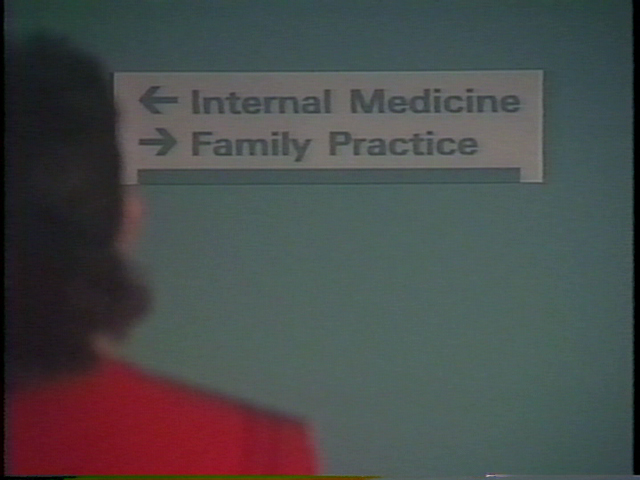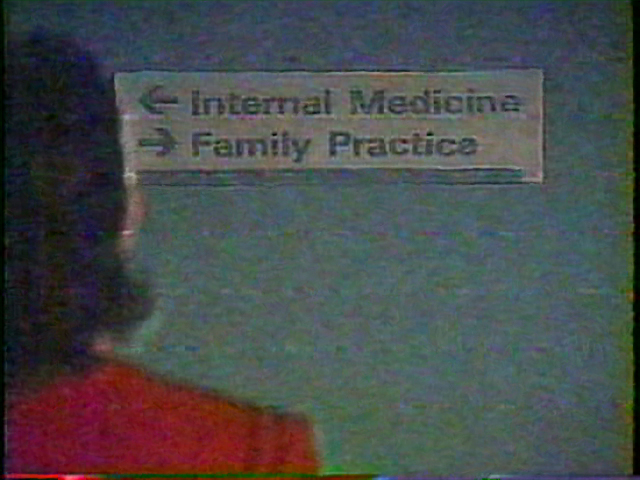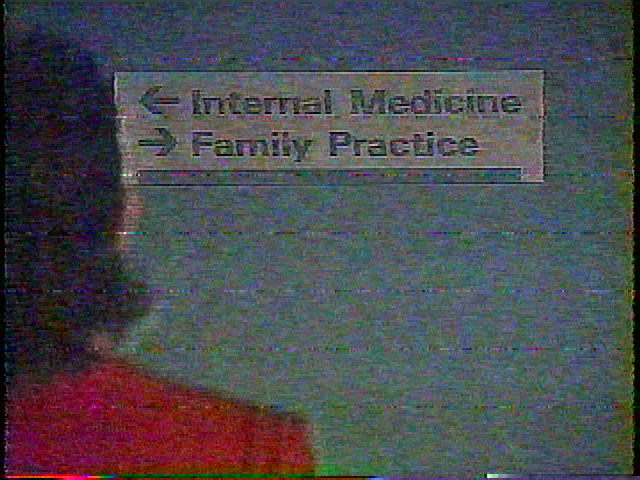


Primary Care NTSC
Single-channel video
Color, Sound, 480p
TRT: Variable/Ongoing
Between 2009 and 2013, the United States passed legislation mandating the purchase of health coverage and discontinuing the existence of analogue television broadcasting. With these changes came confusion and difficulty, as U.S. citizens attempted to negotiate adaptation to new standards in communication and healthcare that had previously remained unchanged for decades.
Using footage from Medical Economics, a video magazine published in the early 1990s for American
doctors, the NTSC standard definition format undergoes a series of transformations in compression
software. The initial and purposeful transformation is the decreasing of and subsequent reconversion
of frame rate, using a range of "best" to "least time consuming" options. Certain features are then
implemented for "enhancement" of the quality, with mixed results. The changes in playback create
analogous issues in audio quality and the comprehensibility of language. As such, the material is constantly
"reformed," but problematic “implementation” prevents it from being broadcast in a quality manner. As with all such radical changes, there exists both a skepticism about the intention and a habit of wistfully comparing the new with the old, however clearly dated and inefficient the former version may be.
The piece is continually reformatted, reconverted, and footage is introduced or reintroduced.